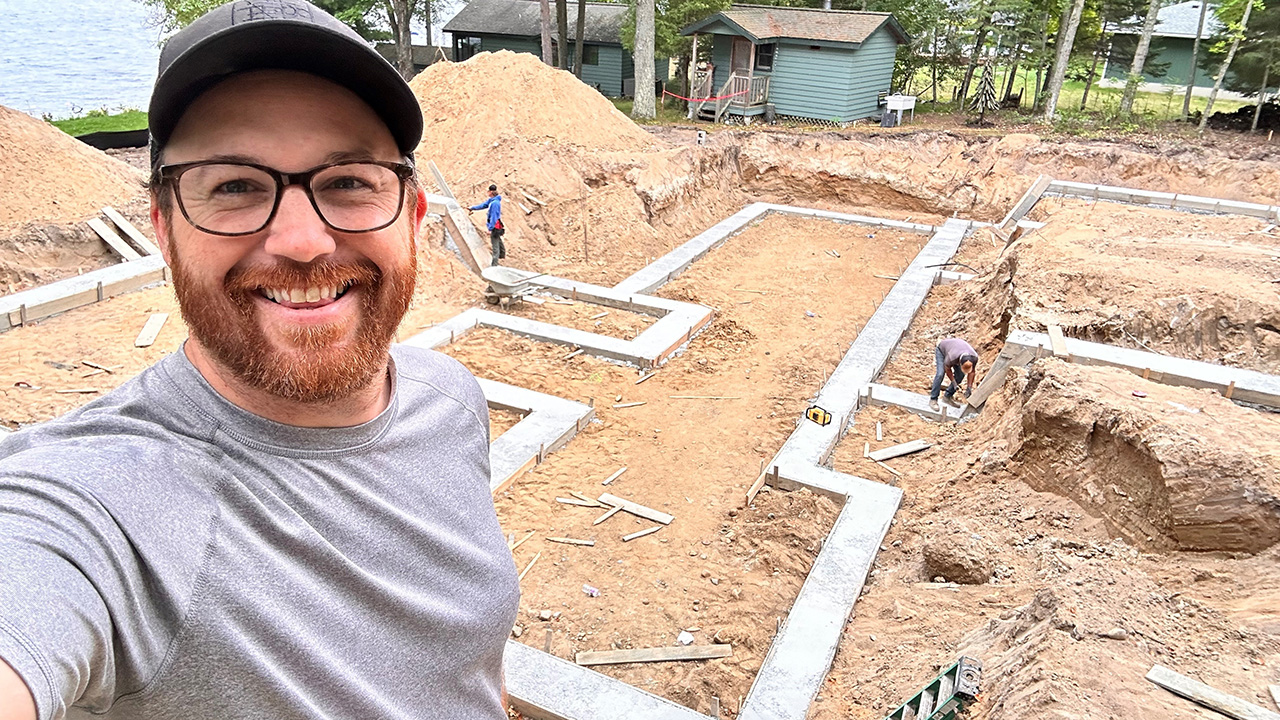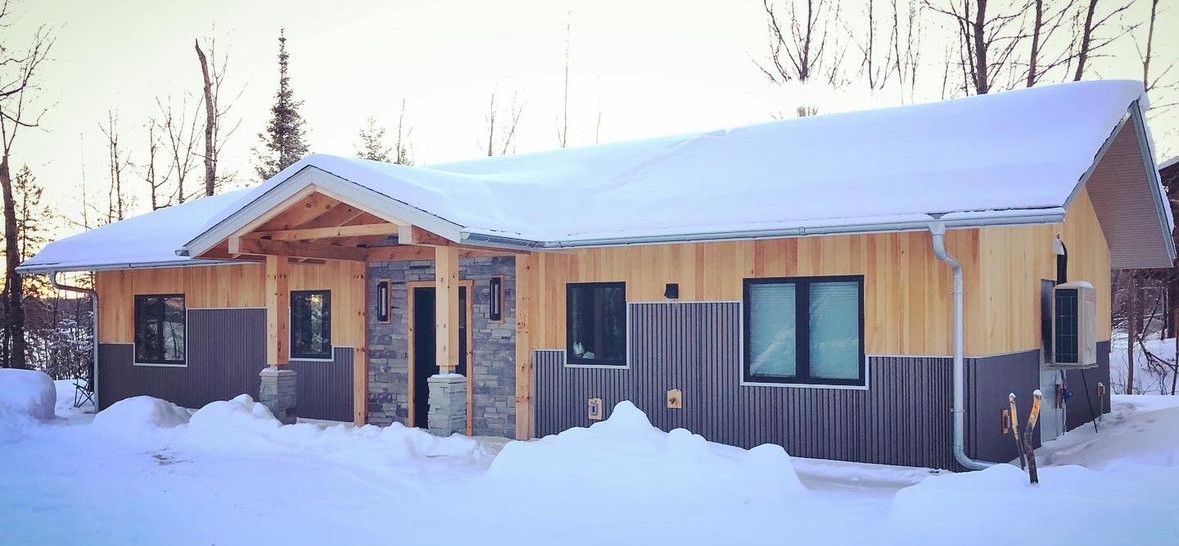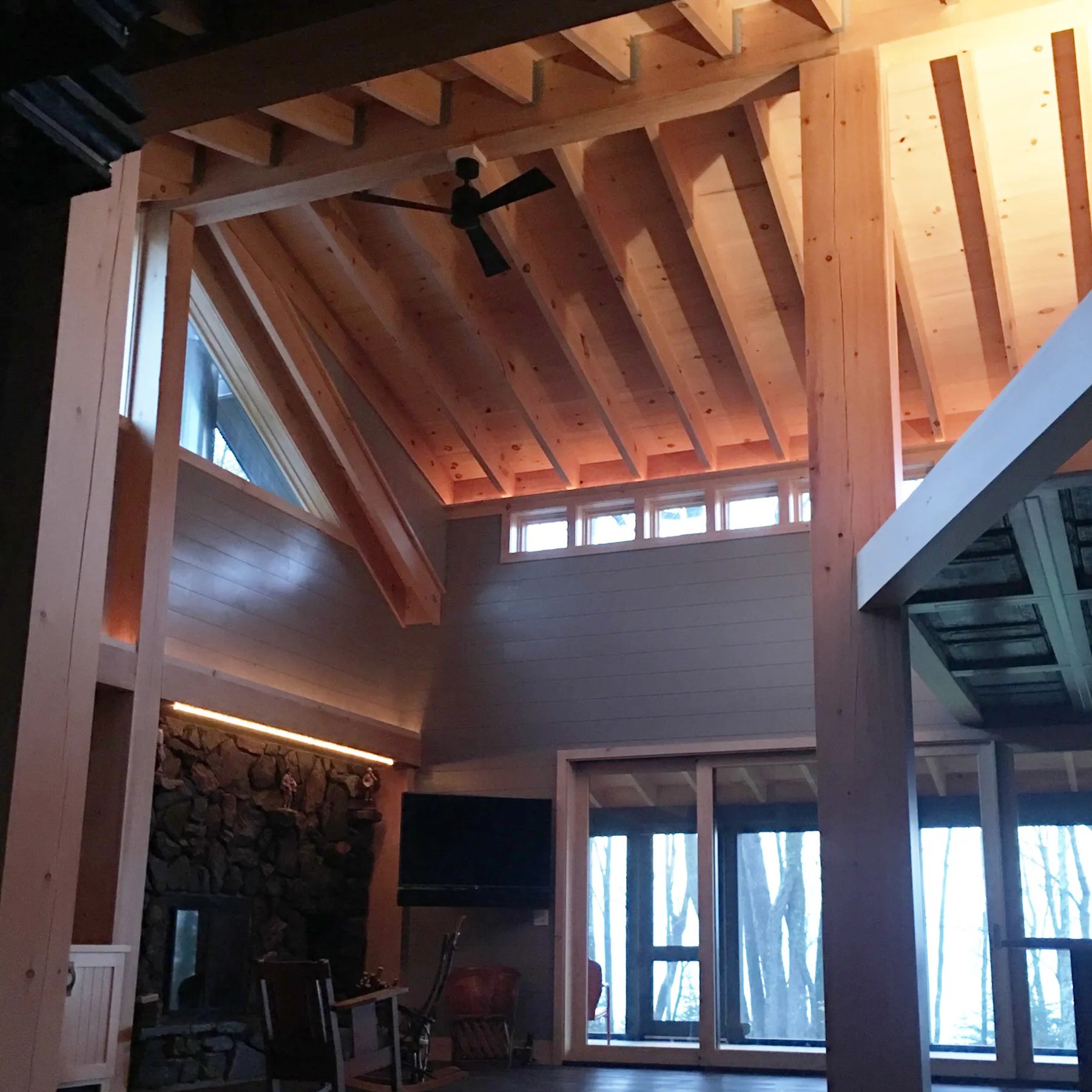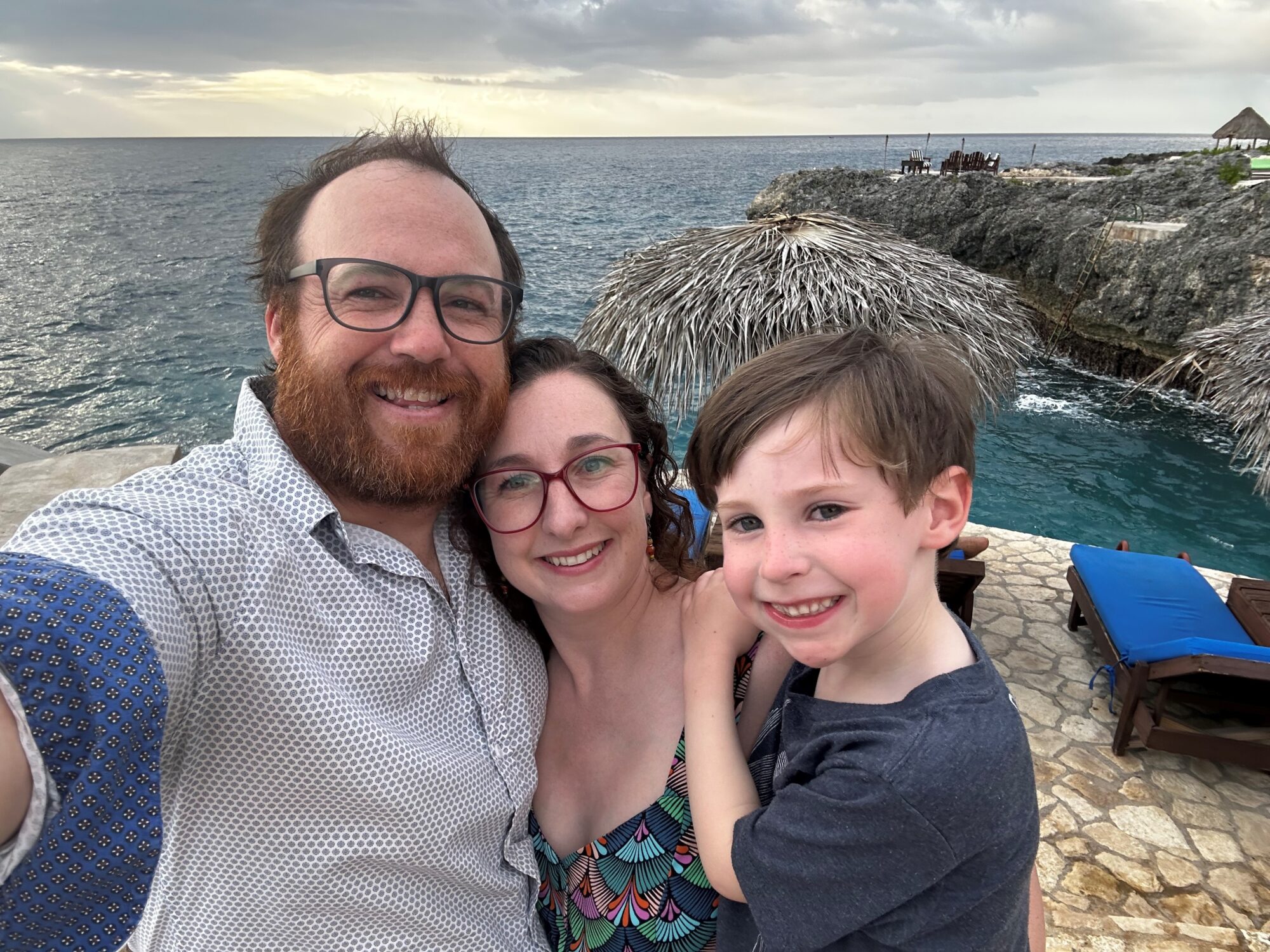
Fresh Energy is thrilled to welcome Sam Friesen as managing director, buildings to our Buildings team! Buildings are a top source of carbon pollution in Minnesota and the United States, contributing 31 percent of U.S. greenhouse gas emissions. Our Buildings team was established in 2022 to help cut carbon pollution from buildings in Minnesota, and Sam’s rich background in sustainable building design and a deep connection to Minnesota brings a wealth of experience and passion to the role.
I sat down with Sam to learn more about his career, his passion for decarbonizing the buildings sector, and what excites him about joining Fresh Energy.
Tell me about growing up in northern Minnesota. How did that shape your approach to life and work?
I grew up in Grand Rapids in a rural community that’s deeply connected to the outdoors and the arts. The community there, much like Grand Marais, had a unique blend of creative and outdoor-loving folks. This environment fostered a strong tie to outdoor living and a love for nature, which profoundly influenced how I live and work today. My dad was a carpenter, so I grew up having evening and weekend projects to work on, something that’s still in my life today.
Even though I grew up in a rural area, it didn’t feel isolated; it had a vibrant arts scene that made it feel connected and lively in a way that other rural areas might not. This connection to creativity and nature has stayed with me and continues to influence my approach to sustainable building and design.
Your journey has taken you from Minnesota to Montana, Egypt, and Morocco. Can you tell me more about that path?
After high school, I was very interested in mechanical engineering, which led me to Montana State University. I was captivated by the natural beauty and hiking and skiing there, and they also had a great engineering program. I worked on fuel cell research, specifically solid oxide cells, which was a fascinating subject, but I eventually realized that I didn’t want to spend my career specializing in one aspect of design. I wanted to be involved in broader, more impactful work like city planning or architecture.
This realization led me to explore international studies, and I had the opportunity to study abroad in Morocco and Egypt, which deepened my interest in global culture and design. I had joined a program at the University of Wisconsin-Milwaukee that combined international studies, geography, and architectural design. It was the perfect fit for me, allowing me to pursue both my passion for design and my interest in global issues.
You’ve spent a significant amount of time designing and building homes in Grand Rapids, particularly with a focus on passive solar design and low-carbon materials. Can you tell me more about that work?
After school when my wife and I moved back to Grand Rapids, I realized I had a unique opportunity to combine my interest in sustainability, building design, and my upbringing in the trades doing carpentry with my dad by designing and building sustainable homes and cabins locally. I was a bit disillusioned with how slow energy efficient homes were being adopted, and I wanted to speed the transition to lower-carbon materials.
My work centered on using natural and local materials, which go hand in hand with reducing embodied carbon in building design. Early on, I was inspired by the “buy local” movement, and I focused on integrating natural materials into structures in new and inspiring ways, serving as proof of concept for how low-carbon, local materials could be used effectively.

Over the years, my goal evolved to develop building systems that are both high-performing and cost-effective. I’d managed to design homes to meet or exceed the highest standards for building efficiency at a lower cost than the minimum code alternatives by designing and building new wall assemblies and novel building systems. This helped us to make sustainable building practices more accessible and affordable, which is a crucial step in decarbonizing the building sector.
But I soon realized that there were diminishing returns here: I’d been taking advantage of all the cost-effective ways to make buildings more efficient, and it’d take advocacy and policy to scale decarbonization in the building sector.
I know you’ve also been involved in advocacy and education around sustainable buildings, and helped testify with us earlier this year to champion decarbonizing residential buildings. Can you share more about that?

Advocacy and education have always been important to me. I’ve been involved with various building science communities, including the Build Show Network, where we discuss and share knowledge about high-performance, low-carbon building practices. I also founded the ENHABIT Conference in northern Minnesota, which focuses on decarbonization topics and building a community around these critical issues.
Through these efforts, I’ve become a voice for decarbonization in the industry, particularly in advocating for accurate and fair cost assessments in sustainable building at the policy level. That led to me collaborating with Eric on the Buildings team this fall to share more about the cost-effectiveness of low-carbon buildings at the Capitol, which ultimately resulted in a new law to reduce emissions from the energy use of residential buildings 70% by 2038, respectively.
That brings us to you joining us at Fresh Energy. What are you most excited about in this new role?
The opportunity to take my work to the next level and scale it across Minnesota is what drew me to Fresh Energy. I’ve spent years figuring out how to make sustainable building practices cost-effective on the ground, and now I’m excited to apply that knowledge at a larger scale and advocate for pragmatic and innovative ways to reduce carbon in our buildings.
The workplace culture at Fresh Energy and the interactions I’ve had with the team were also significant factors in my decision. The mission-driven approach to decarbonization and the chance to work with a talented group of people make me eager to contribute to Fresh Energy’s goals.
You’ve mentioned a love of travel to me before – any recent trips or destinations you’re particularly fond of?
I’ve been fortunate to travel to some incredible places, both through my schooling, internships, and personal travel. One of my favorite places I’ve ever visited is Crete, with its beautiful hills of olives and lemon trees, plus it has amazing people, and the food’s fantastic. I also really love Jamaica, which has a unique and vibrant culture. Those are my top two, but I’ve also loved exploring the food and landscapes of Spain, England, and Mexico as well.

Last question: when you’re not working on building designs, how do you spend your time?
I love spending time outdoors with my wife and son—hiking, skiing, exploring nature, and looking for wildflowers are some of my favorite activities. I’m also really into cooking and experimenting with international cuisine. It’s a great way to unwind and bring a bit of my travels into everyday life.
Thanks for sharing with us, Sam! We’re so glad to have you on the team and look forward to the great work you’ll do to help decarbonize buildings across Minnesota and the Midwest.
Stay tuned for more from Sam soon!
